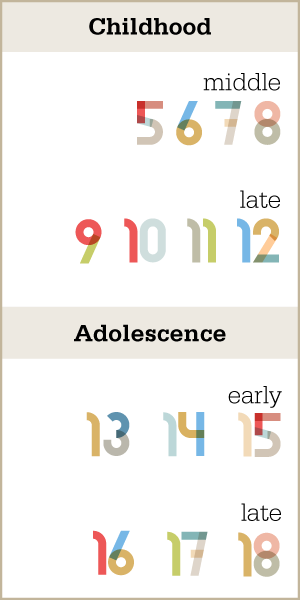Posted: December 9, 2015
An experienced adult who works effectively with a group of school-age children and youth can be inspiring. The adult seems to have control of the group, while also encouraging and engaging the youth. This is not as easy as it may look. An educational background in teaching or child development is a big help, and experience enhances the adult’s confidence. What about the adult without this type of background? How can adults coming from different backgrounds prepare themselves to interact positively with children and youth in out-of-school settings?

Importance of relationships with caring adults
Michelle Arehart has been the director of Kearney Community Learning Center (KCLC), a large elementary and middle school after school program provider in Nebraska, for nearly a decade. She is emphatic about her priorities when training new staff.
"One of the most important things…is the fact that relationships are the biggest part of the program--of classroom management and of getting the kids to listen to you--so you can go to that next step and teach them."
Michelle goes on to describe why this is so.
"When a student gets to know a teacher and feels comfortable with a teacher and knows that teacher cares about them, they will do so much more for that teacher…. Just valuing them as a human being and letting them know you care about them and that you want to know about them personally. What are they into--what sports, what cartoons, what books? What is it that they like? Being able to have those conversations is huge."
Building relationships
This principle of building strong, trusting relationships with youth holds true for all ages of children and youth, but it can look and feel very different depending on the ages and stages of development:
Middle childhood (ages 5-8)
Building relationships with children ages five through eight (kindergarten through third grade) works well when the adult displays a caring and kind demeanor and keeps a positive tone. These children are very interested in pleasing adults, and are very sensitive to criticism. Adults need to keep interactions positive and encouraging.
These children cannot be expected to be fluent readers, so adults should use simple, concise, concrete directions--one verbal instruction at a time. Children of this age are very interested in exercising their physical strengths and skills, and need time to run and play outdoors.They like to socialize, and often are very close to a same sex, best friend. They benefit from concrete instructions and limits.
Late childhood (ages 9-12)
As children enter the upper elementary ages of nine through twelve (grades four through six) they have more ideas of their own about projects and activities, and want to have more freedom and creativity in what they do in their out-of-school time activities. To build caring relationships with these children, adults can listen to their ideas and give them limited freedom to choose activities. The youth may want to develop ambitious projects, but have trouble planning and organizing. Here the adult leader can build their trust by supporting and encouraging them when needed, and providing the resources to implement projects the children are interested in.
These children are very active and physically skilled, and also need time to play games and outdoor sports. They enjoy competition, but may need adults to help settle disputes over rules and infractions. Adults must be ready to listen when they express themselves, as they truly desire adult feedback and approval.
Early adolescence (ages 13-15)
The young adolescent in the middle school years is consumed with the social world, and is beginning to express sexual interests. These youth are self-conscious and highly aware of bodily differences. Adults need to be sensitive and avoid comparisons. Youth in this stage are interested in role models as they build their own identities, and may want lots of time to talk and share their ideas and feelings. Caring adult leaders need to practice reflective listening skills, using verbal and nonverbal cues to encourage youth conversation and self-expression.
Youth of this age can be challenging as their mental skills develop, and like to argue. Youth workers can help them sharpen their logical skills by teaching how to debate in a passionate yet civil manner. A good way to plan activities is to allow youth to work on group projects that build skills while allowing for friendships to grow.
Katrina Prellwitz, who coordinates the KCLC after school program at a Kearney middle school, has these insights from working with 13-15 year olds in her program:
"My favorite thing about working with middle school youth would be just their daily stories. They're still at that age where they're trying to find themselves so they…tell you things that you know are not true, but then you just keep letting them tell you their stories. Just being there for them…is important and rewarding when you see that they trust our staff."
Late adolescence (ages 16-18)
Late adolescence, high school age students, are often seen in out-of-school time programs as assistants to the adult leaders. They may assist by planning and preparing activities for younger children, by acting as tutors, or by guiding particular projects. Youth of this age are maturing in their ability to make responsible decisions, and their identities are becoming established as they decide on possible career paths.
These youth are self-aware and actively seek adult friends and mentors as they prepare to move beyond high school into college, technical training, or a profession. Caring adults need to be conscious that they are modeling behaviors at all times, and be sure to treat these youth with respect by listening to their goals and plans as they struggle to separate themselves as individuals from family and friends who may disagree with their choices. They may want advice from another trusted adult but have a hard time asking for it. Adults need to exercise good judgment to help guide them toward authentic, healthy choices.

